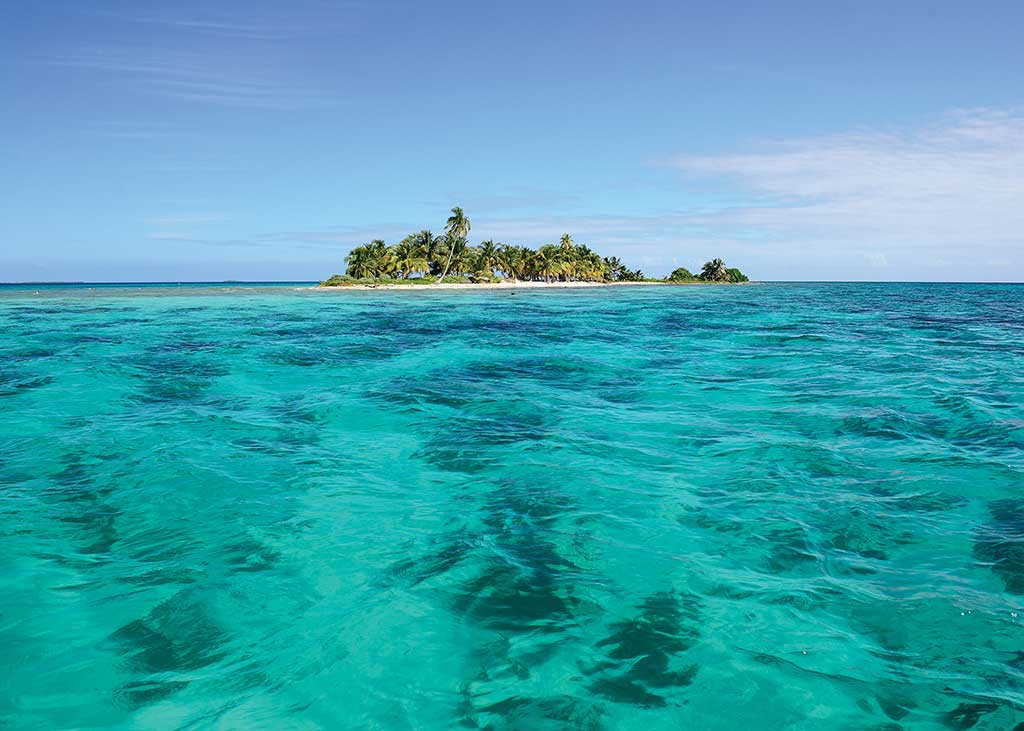On my first trip to Belize, I immediately hopped on a connecting flight to Ambergris Caye. As fate would have it, the plane was full and I was seated next to the pilot. In a matter of minutes, the cockpit views of Belize’s Caribbean coastline overshadowed my angst about flying in a puddle jumper. Surrounded by a vast expanse of sapphire and jade—sea and reef—we soared over one speck of land after another. Mangrove clumps gave way to larger plots brimming with white sand and coconut trees, beckoning from our windows. Years later, these aerial views still take my breath away.

Silk Cayes. Photo © Lebawit Lily Girma.
More than 200 islands are scattered along the country’s shoreline, north to south.Belize’s cayes are everyone’s deserted island fantasy come true. While the Belize Barrier Reef is the country’s best-known asset, first-timers miss many of the islands winding along its 180 miles. More than 200 islands are scattered along the country’s shoreline, north to south. They range from uninhabited plots to at least 20 coral isles offering cozy cabanas, postcard-worthy beaches, and utter seclusion. Others, like Laughingbird National Park, a World Heritage Site, are protected swoops of sand where park rangers stand ready to receive day-trippers.The northern cayes are the most visited—Ambergris being the only caye with paved roads and cars—not least for offering a wide array of tourist amenities and proximity to Belize City. Those who venture off the tourist trail and head south, just an additional one- to two-hour journey, are rewarded with the most spectacular Caribbean scenery. Tobacco Caye’s rustic, overwater cabanas, Ranguana Caye’s charming cottages, and Glover’s Reef’s adventure camp sites are just a handful of idyllic island getaways. Meanwhile, renting an entire caye is a distinct possibility on French Louie Caye or remote Lime Caye, among others.
A stone’s throw from the cayes, a symbolic white line of surf signals the reef’s entrance—a happy sight for divers and snorkelers who find their bliss in marine reserves teeming with giant corals, sponges, and colorful critters.
Regardless of your chosen island, days are spent alfresco: kayaking, sailing, fishing, feasting on fresh catch, swimming alongside rays and turtles, gazing at magnificent frigatebirds hovering in blue skies. Or mastering the art of dolce far niente: the sweetness of doing nothing.
High season is mid-December through May, which is considered the “dry season.” Sunny skies and lush vegetation dominate throughout the country during the North American winter. It can change, however. November can be dry and sunny, while December, January, and even February have played host to wet cold fronts that either blow right through or sit around for days. The weather has become more unpredictable each year, as in most places in the world. And when you’re visiting the cayes, weather is critical.
June, July, and August technically form the rainy season, which may mean just a quick afternoon shower or rain for days. This also means significantly discounted accommodations. August is most popular with European backpackers, while December and February are dominated by North Americans. Some tourism businesses shut down completely during the month of September and part of October, the peak of hurricane season.
Your best bet? Be prepared for clouds or sun at any time of year. A week of stormy weather may ruin a vacation planned solely around diving, but it could also provide the perfect setting for exploring the beaches, culture, or inland attractions surrounding each mainland jump-off point.
Excerpted from the First Edition of Moon Belize Cayes.